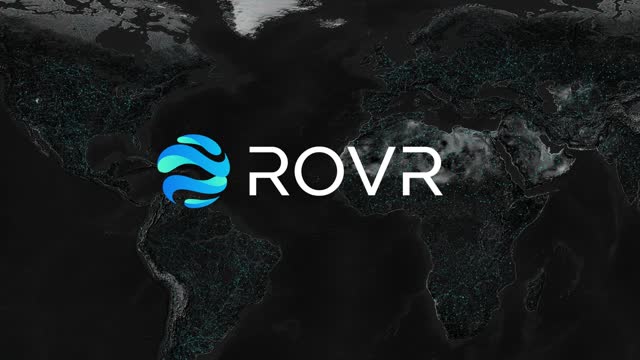
ROVR: A DePIN Project Building the 3D Map Machines Will Live On

Most people don’t realise it – but today’s AI systems are mostly blind when it comes to understanding the physical world.
While language models are trained on oceans of text – robots, drones, and autonomous vehicles are starving for high-quality, real-world 3D data. The lack of scalable, accurate, up-to-date spatial maps is quietly becoming one of the biggest bottlenecks in AI.
ROVR is here to fix that. And they’re not doing it with a fleet of $500K cars. They’re doing it with a decentralised, contributor-powered network that anyone can join.
The Problem: Outdated Maps for an Autonomous World
High-definition 3D mapping is the invisible infrastructure that autonomous systems rely on. But collecting it is painfully expensive and slow. Companies like Google and TomTom operate centralised fleets that crawl city streets, updating maps once a year – if that.
For spatial AI, robotics, AVs, and AR/VR platforms, that’s not nearly enough. These systems need centimeter-level precision. They need updates every week. And most importantly, they need access – something startups, researchers, and non-enterprise players currently can’t afford.
Today’s systems are optimised for 2D content. But the future is spatial.
What ROVR Does
ROVR is a DePIN (Decentralised Physical Infrastructure Network) project building a global, real-time, machine-readable 3D map of the world.
Rather than deploying expensive vehicles, ROVR empowers a community of contributors with purpose-built hardware devices. These contributors collect spatial data while driving their everyday routes, earning tokens in return. The result? Scalable, continuously refreshed 3D maps that are accessible, precise, and updated by the crowd.
ROVR’s core idea: “Digitizing Earth. Designing the future.”
How It Works: Hardware, Tokens, and Contributor Power
ROVR uses two custom-built devices:
- TarantulaX (TX): A $199 RTK-enabled device that pairs with a smartphone camera to collect spatial data. It’s designed for accessibility and scale.
- LiteCone (LC): A $2,499 LiDAR-equipped unit with RTK, IMU, and GNSS, capable of capturing 10GB of true 3D point cloud data per hour. Designed for professionals.
Contributors install a device, drive their usual routes, and earn $ROVR tokens per kilometer mapped—with bonuses based on quality, freshness, and demand zones.
ROVR maps are updated weekly. Redundant data yields diminishing rewards, while high-quality submissions (graded A–F) earn multipliers. In priority zones, contributors can receive up to 7x reward boosts.
What Makes ROVR Different
ROVR’s edge lies in how it blends decentralisation, precision, and economic alignment:
- True 3D Mapping: Unlike other projects that simulate 3D from 2D video, ROVR captures real LiDAR point clouds—essential for training autonomous systems and spatial AI.
- Centimeter Accuracy: Through a strategic partnership with Geodnet, ROVR taps into a decentralised RTK network without needing costly base stations.
- Buy-and-Burn Model: 60% of all revenue is used to buy back and burn $ROVR tokens, aligning long-term value with network growth.
- Decentralised Storage Roadmap: To reduce cloud costs, ROVR plans to transition to decentralised storage solutions in 2025.
Use Cases Across Industries
ROVR’s real-time, high-accuracy 3D maps unlock a wide spectrum of applications:
- Autonomous Vehicles & ADAS
- Smart City Infrastructure
- Robotics & Drone Navigation
- Simulation Platforms & Digital Twins
- Spatial AI Model Training
- AR/VR Experience Generation
Early traction includes partnerships and pilots with Taobao, ApolloGo, and Baidu Maps, all of whom used ROVR’s datasets to train, annotate, or validate AI models.
Market Opportunity: Tapping Into Multi-Billion-Dollar Demand
ROVR sits at the convergence of two rapidly expanding markets:
- HD Maps for AVs: $2.4B in 2024, projected to grow to $20B by 2032
- Spatial AI & 3D Simulation Infrastructure: Expected to reach $1 trillion by 2034
Critically, ROVR doesn’t just serve these markets—it expands them. By slashing the cost and complexity of data generation, it makes 3D spatial intelligence accessible to new groups: indie developers, AV startups, smart city planners, and AI labs.
Contributor Involvement: Earn While You Drive
ROVR’s contributor ecosystem is designed for scale and fairness:
- TX Devices earn 1.6 $ROVR/km
- LC Devices earn 16 $ROVR/km
- Rewards decay for re-mapping the same roads within a week
- Data quality scores determine payout percentages (A-tier = 100%)
- Bonus zones offer up to 7x multipliers
- Contributors can also qualify for airdrops (e.g. 20,000 ROVR after 2,000 km mapped)
With over 3,000 TX units shipped and the first batch of 50 LCs sold out, contributors are already generating massive spatial datasets – 20 TB in just two weeks during one deployment.
A Vision Beyond Mapping
ROVR isn’t building maps for human eyes.
It’s creating a 3D memory of the world that machines can live in, learn from, and navigate through—accurately, autonomously, and intelligently.
From powering the next generation of robotics to enabling real-time simulation environments, ROVR is positioning itself as a foundational layer for the spatial internet.
This isn’t just a DePIN project. It’s a bet on the future of machine perception.
If autonomous systems are the future, 3D data is the foundation.
And if 3D data is the foundation, ROVR is building the most accessible, scalable, and precise version of it yet.
Whether you’re an investor, contributor, or builder – ROVR is one project you’ll want to keep your eye on.
James Gould

